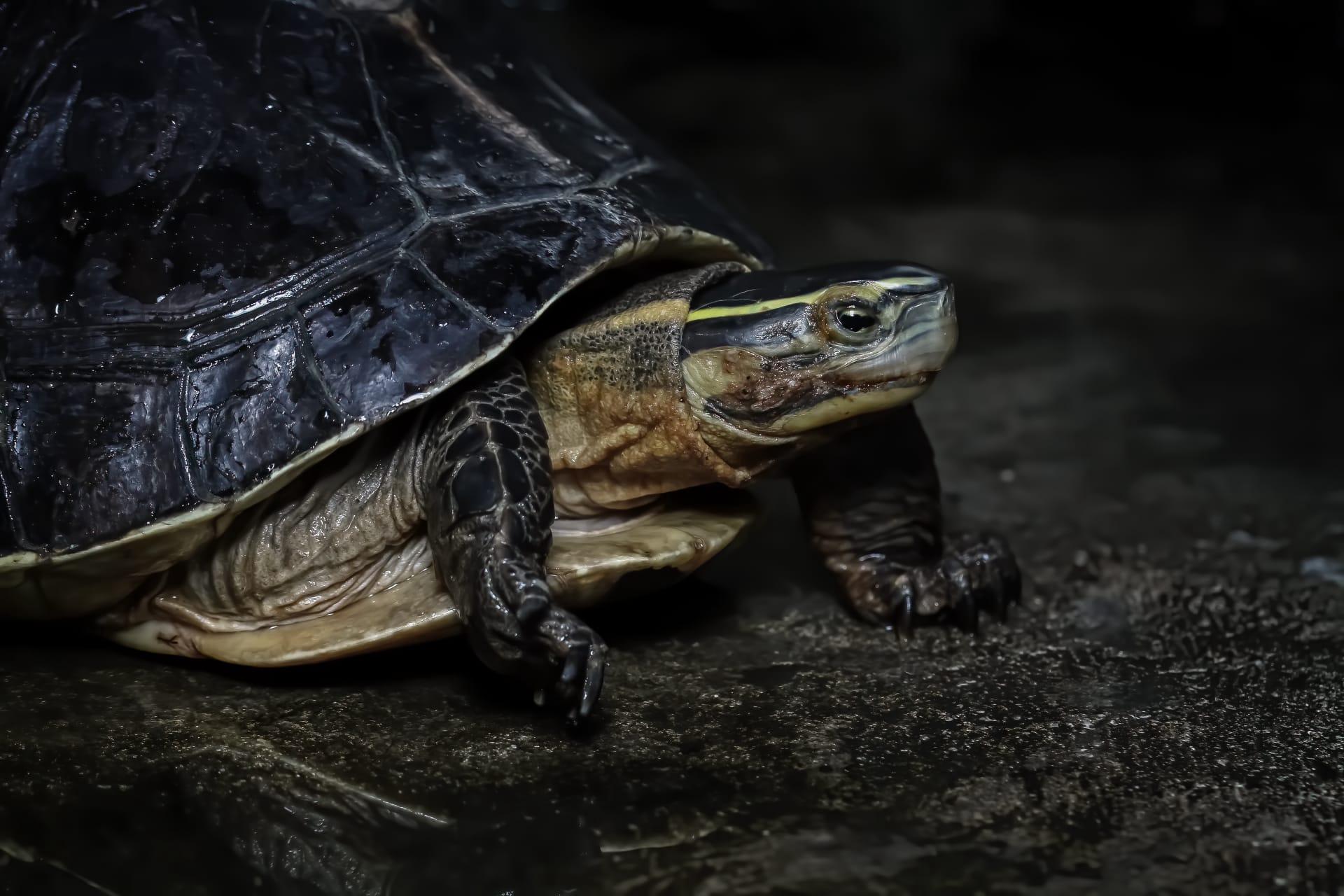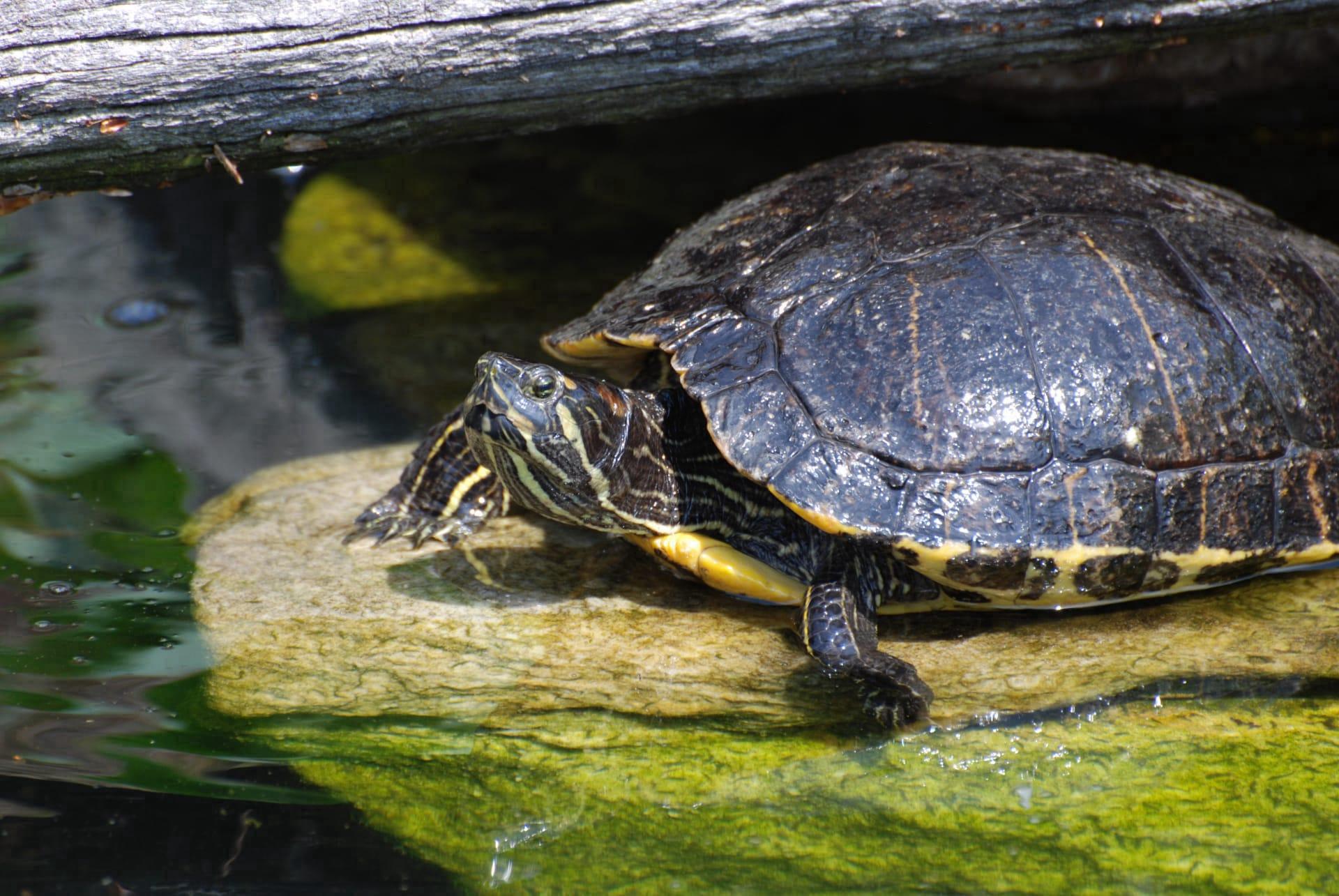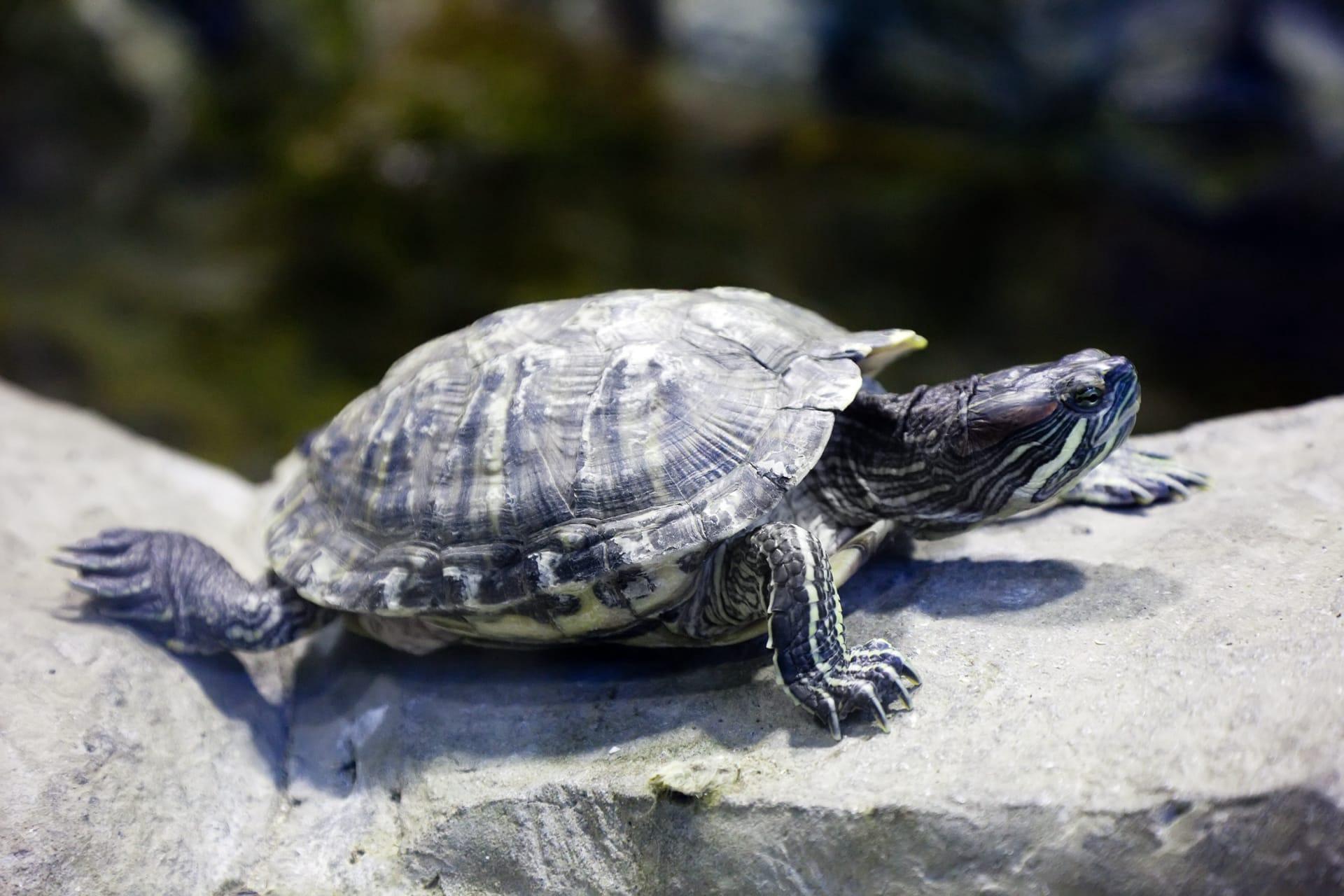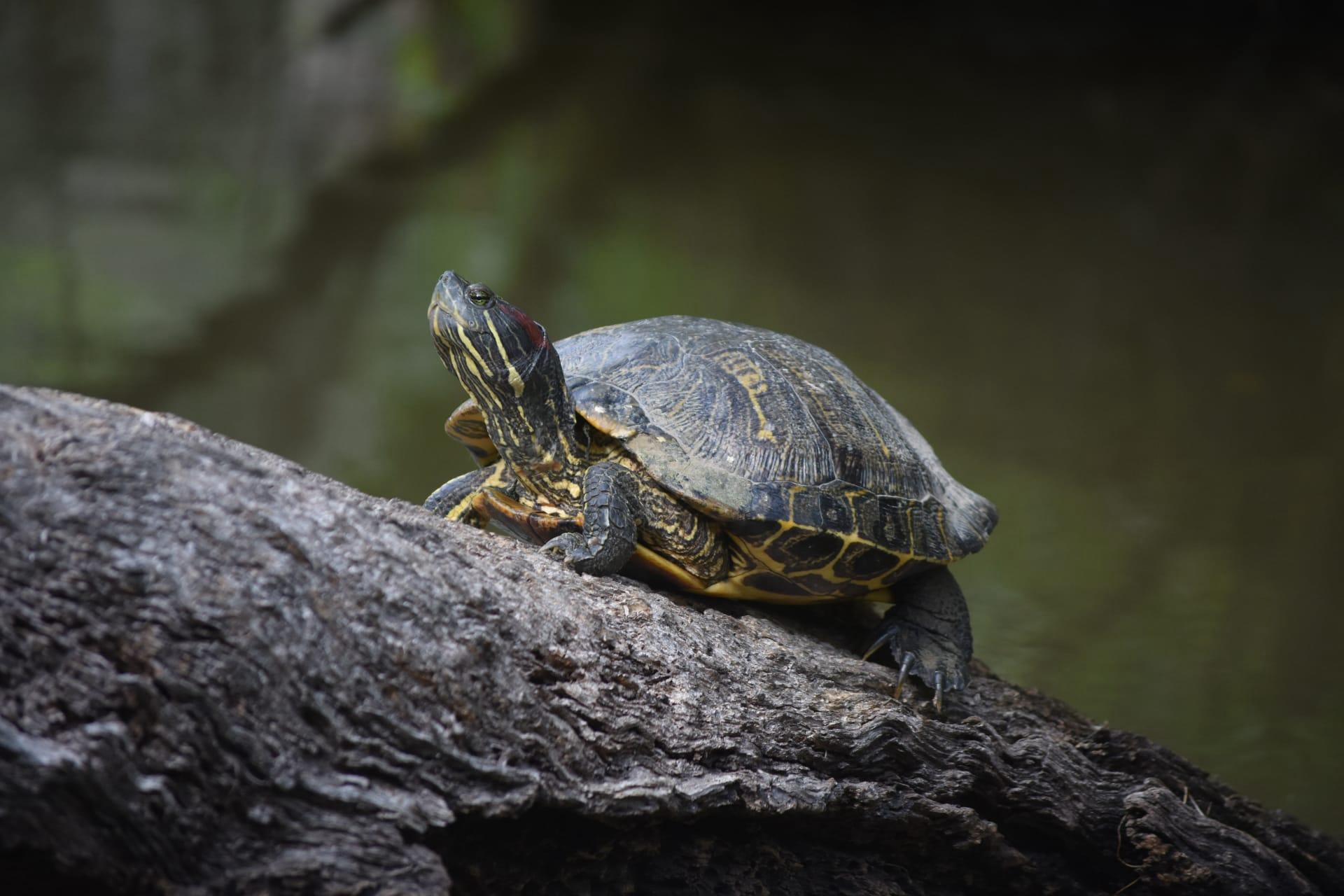Eastern Painted Turtle Characteristics
- Home /
- Mini Encyclopedia /
- Animal /
- Eastern Painted Turtle Characteristics
1
The Eastern Painted Turtle, a vibrant reptile native to North America, is celebrated for its distinctive, colorful appearance. Adults typically measure between 4 to 10 inches in shell length, showcasing a smooth, flat carapace that ranges from olive to black, with red, orange, or yellow stripes along the edges. Their average lifespan in the wild is about 20 to 30 years, though some can live up to 50 years under ideal conditions. These turtles also feature a unique yellow plastron (the underside of the shell) with a dark, central blotch.
One of the Eastern Painted Turtle's most fascinating organs is its skin, specifically adapted for thermoregulation. Unlike mammals, these cold-blooded creatures can't generate their own body heat. The skin plays a crucial role in absorbing heat from the sun, a process essential for their survival. This sunbathing behavior, known as basking, helps regulate their body temperature, aiding in digestion and immune function. The skin's rich blood supply allows for efficient heat exchange, while its dark coloration maximizes sunlight absorption.

2
Question: What do Eastern Painted Turtles eat?
Answer: Eastern Painted Turtles have a varied diet that changes as they age. Young turtles are predominantly carnivorous, feasting on insects, small fish, and crustaceans. They have a penchant for protein-rich meals that aid in their growth. As they mature, their diet shifts to include more plant matter, such as algae and aquatic vegetation. This omnivorous diet provides a balanced nutrition crucial for their health. Adult turtles often feed in water, where their prey is more accessible, and their streamlined bodies and webbed feet make them adept swimmers.

3
The movement of Eastern Painted Turtles is a blend of aquatic grace and terrestrial awkwardness. In water, they are agile and swift, using their webbed feet to glide effortlessly. They can dive and navigate through water with ease, reaching speeds necessary to catch prey or evade predators. On land, however, their movement becomes more laborious. Their bodies, adapted for aquatic environments, make them slower and more vulnerable on solid ground.
In hunting, Eastern Painted Turtles use both patience and speed. They can remain motionless for long periods, waiting for prey to come within reach. Once a target is spotted, they strike with surprising speed. Their diet mainly consists of fish, insects, and aquatic invertebrates, which they catch using their sharp beaks. They also use their keen sense of smell to locate food, both underwater and on land.

4
Eastern Painted Turtles thrive in a variety of freshwater habitats. They prefer slow-moving rivers, marshes, ponds, and lakes where the water is calm and vegetation is abundant. These environments provide ample basking spots, essential for their thermoregulation, and a diverse food supply. Clean water and healthy aquatic vegetation are critical for their well-being, as they are sensitive to pollution and habitat destruction.
Their reproduction is marked by distinct behaviors and adaptations. Mating occurs in water, typically in spring. Females lay eggs in sandy or soft soil, often at a considerable distance from water bodies. They exhibit remarkable navigational skills in locating suitable nesting sites. The eggs, usually 4 to 15 per clutch, hatch after about 2-3 months. Temperature determines the sex of the hatchlings; warmer temperatures generally produce females, while cooler temperatures yield males.

5
Book: "The Painted Turtle: Life in a Shell" by Andrew M. Gordon (United States, 1998). This engaging book offers a comprehensive view of the life and ecology of the Eastern Painted Turtle. Gordon, a renowned herpetologist, delves into their behavior, habitat, and the challenges they face in the wild. The book is a blend of scientific research and captivating anecdotes, making it a fascinating read for both turtle enthusiasts and wildlife researchers.
Book: "Turtles of the Eastern United States" by Karen R. Lips (United States, 2005). Lips provides an in-depth look into various turtle species, with a significant focus on the Eastern Painted Turtle. The book covers aspects like their physiology, habitat, and conservation efforts. It's a valuable resource for understanding the broader context of turtle species in the Eastern United States, including the unique characteristics and conservation status of the Eastern Painted Turtle.